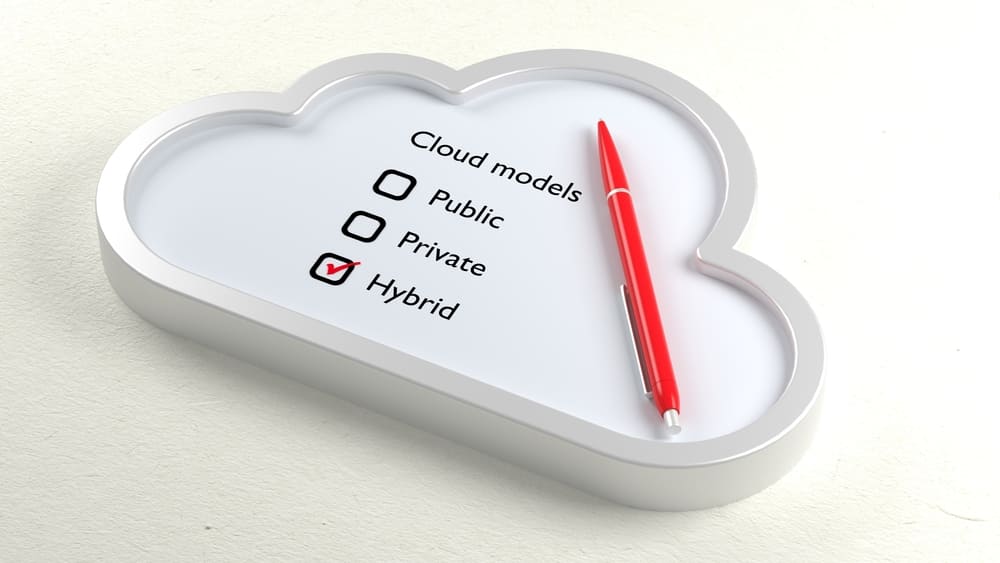
CTO Guide: Cloud Computing Business

Cloud computing has revolutionized the tech industry, as a whole. But there are many things that Chief Technology Officers still seem to get wrong about them.
This is why it’s important to understand what cloud computing is and what it’s used for. More than that, the common pitfalls and false assumptions need to be addressed, as well.
Subjects such as costs, scalability, smoothness in incorporating the technology into the company’s system matter, as well. So if you’re wondering about subjects like CTO vs CIO, you might as well throw this in too.
To that end, here is a guide that will cover all things Cloud Computing for CTOs to consider.
Cloud Computing: The Basics
For anyone wondering about what is the role of technology in business, cloud computing is an excellent answer. Hardly any company does not use cloud computing to some capacity in this day and age.
To not use cloud computing is to severely handicap yourself. That’s just how the market is now.
But what exactly makes cloud big technology so essential? What qualities does it possess that makes it invaluable to all corporate enterprises? Most important of all, how can companies make the most of what it has to offer?
To make it as simple as possible, cloud computing is comprised of several aspects. These are:
- Applications – Cloud computing is commonly used to create applications for both mobile and desktop platforms. Many of today’s most profitable technologies are based on the cloud.
Building applications also rely on those technologies for API, code structures, architecture, containers, microservices, and many others. In a sense, if you want to build an app, you will be associated with cloud computing whether you like it or not.
- Storage – One of the most well-known functions of cloud computing, the technology is widely used for data storage. Everything from apps to websites to desktop software all uses the cloud to back up their documents and files.
This leads to another highly useful function of cloud computing, which is data retrieval. As long as the files are stored in the cloud, it can be downloaded or transferred as many times as needed.
This makes users considerably less dependent on hardware storage devices and attachments.
- Streaming – Practically all streaming services these days depend on the cloud to deliver their content to viewers. It is how platforms like Netflix, YouTube, and Spotify are able to serve their customers.
Aside from movies and music, many companies also use cloud computing for online games. Whether this comes in the form of mobile apps, MMORPGs and FPS, or even flash games, it doesn’t matter.
Without the cloud, none of those would work.
- Software delivery – More and more, software companies are dropping the old method of selling their products via discs or flash drives. It is still happening, particularly in the Blockchain sectors, but the trend is certainly seeing a nosedive.
Simply downloading software via links is just so much easier and more cost-effective. It’s also better for the environment, which many tech firms consider a major incentive.
- Testing – Apps and online services have to go through a substantial amount of testing before they can launch. Without the use of the cloud, however, this can quickly become a costly affair.
Using cloud computing can be an excellent way to reduce expenses since it can be done with fewer resources and can be scaled as needed.
- Data analysis – Cloud computing essentially offers companies the means of unifying their collective corporate data from various departments into one place.
This then makes analyzing all of the collected data much easier to create a cohesive report in a more efficient manner.
By doing so, it’s also easier to make decisions, adjustments, and come up with solutions as needed.
- Data intelligence-gathering – In the current age, one of the most valuable currencies is data. Not personal or private data, of course. Rather, general customer data.
Trends, preferences, consumer habits, activities, and feedback are all necessary to craft better products. To that end, companies can use cloud computing to collect that data.
This can be done via surveys, algorithmic solutions, or product records. Those and more are available via cloud computing for review and analysis.
Those are the areas in which cloud computing excels. However, this technology will only serve you well if you understand it on a fundamental level.
As such, you need to know what types of cloud computing there are and the services that you can expect from them. This will better inform your choices later when you integrate cloud computing into your company’s system.
This is also where the difference between CIO and CTO can shine.

Cloud Computing Types
Cloud computing comes in three main types. Understanding their peculiarities and what sets them apart from each other is essential. Not only will this help you choose the type most suited for your needs, but it will also prevent future issues that could easily be avoided.
Here they are:
- Public – Public cloud computing refers to services that are available to anyone. These involve servers that can be accessed without special privileges or exclusive keys.
Examples of this type of cloud computing service are Microsoft Azure and Amazon Web Services. Many companies use public cloud computing for the lower price and the ease of access.
However, it does come with the risk of being more exposed to security issues and data breaches. If you think about the role of technology in business, though, we believe that this is an acceptable risk.
- Private – Contrary to public cloud computing, the private type is exactly that – private. This can only be used by those with authorized access and only for one particular business or organization.
More importantly, this type of cloud computing service involves keeping the servers via local datacenters. An option to have an external service do this with their own servers is available, though.
- Hybrid – Hybrid cloud computing combines certain aspects of public and private services. This involves the use of specialized technologies that allow for the sharing of data between them.
One of the biggest advantages that come with this option is flexibility. Companies are able to switch between the two without compromising the integrity of their data.
Cloud Computing Services
- Infrastructure as a service (IaaS) – As basic as basic cloud computing services go, IaaS involves offering clients infrastructure to rent, as well as architectures.
For reference, this is the service you want if you are looking to rent operating systems, virtual machines, storage, and servers.
- Platform as a service (PaaS) – As the name suggests, this type of service involves paying for the privilege of using a platform. This platform can then be an environment where you can conduct tests, develop apps, and delivering software products.
- Serverless computing – Technically a feature of PaaS, this service involves the computing capabilities of a third-party provider for computing purposes. This is an excellent solution for businesses that need to build and operate apps without maintaining their own servers.
- Software as a service (SaaS) – Finally, SaaS is the model that more and more software companies are now turning towards. This involves allowing users to use software programs for a set period of time, based on how much they paid.
Costs and Savings
One of the most common misconceptions with regard to cloud computing is the cost. Specifically, it is thought to be expensive than maintaining a local data center. This is just not the case.
In fact, cloud computing can reduce expenses by a considerable amount. Not only does it remove much of the overhead costs, utility and maintenance become a non-issue, as well.
More importantly, cloud computing is scalable. You can use as much or as little of it as you need, thus reducing any extra expenditures that you might have in having your own servers and other hardware.
Industry Impact

It is no exaggeration to say that cloud computing changed the landscape for the tech industry over the past decade. It is literally Amazon’s biggest source of income, not its retail wing.
With cloud computing, there was less of a need for local data storage and it became possible to access files anywhere, any time. As a result, the industry underwent a paradigm shift and is how the cloud is changing business.
Nothing makes this more apparent than the rise of SaaS among some of the biggest tech companies in the world. However, this is only the latest in the many major impacts that cloud computing has had.
Streaming, cloud storage, remote work, data sharing, e-commerce, the Internet of Things, and of course, software on-demand. Those are just some of the biggest points where cloud computing carved a huge chunk of the pie for itself.
They should answer “what is the role of technology in business?” though.
CTO Relevance
One of the biggest concerns with regard to the prevalence of cloud computing is the impact it has had on certain corporate positions and the role of technology. Among the most vulnerable of these are CTOs.
The original purpose of the role is to create and implement technologies that will benefit the company in relevant ways. This used to be about building servers, installing computers, creating or purchasing software, and so on.
However, cloud computing has made many of those things obsolete. These days, CTOs act more like heads of purchasing by deciding on which cloud platforms and products are worth buying.
Of course, there are still jobs like identifying future tech trends that will affect the company. However, this role can be fulfilled by other executives. This drastically reduces the importance of CTOs, as a result. This is the role of IT in business, in the first place.
Fortunately, there are still things that can be done about it. These include the following:
- Gaining a deeper understanding of cloud computing.
- Developing a better business sense.
- Following and potentially predicting cloud computing trends.
- Learning new skills relevant to cloud computing.
- Improving the integration of cloud computing into the company’s system.
It’s often the case that new technology can make certain jobs less relevant than before. But by simply adapting, CTOs can leverage the advantages that come with cloud computing to make themselves more valuable and to contribute more to the company to become technology leaders.
Virtualization VS Cloud Computing

Cloud computing is often confused with virtualization. As a result, the two terms are used interchangeably, but this should not be the case.
Virtualization is the creation of things in a digitized format right than a physical one. This includes software, documents, applications, operating systems, and so on.
In contrast, cloud computing is all of that but is running via remote servers that are being hosted by an external source. It’s basically a matter of technical differences, which is an important distinction.
To instruct employees to virtualize something is not the same as telling them to integrate cloud computing into their projects. The former won’t even necessarily go through the cloud. And if that happens, you would be wasting a lot of time trying to fix the issue.
Maintenance Issues
While it can be said that using cloud computing services does involve considerably less work than running a private local server, this does not eliminate maintenance issues. They just come in different forms.
Companies behind cloud computing will do their best to make sure that there won’t be any hiccups with their cloud services. But there will always be those in cloud big technologies.
Server crashes, slow speeds, bandwidth limitations, high traffic saturation, or just pure human error can still surface.
There are also problems that simply cannot be fixed or easily addressed through cloud computing. Identifying those and creating the necessary protocols to get ahead of the matter is important.
Security, Privacy, and Data Protection
Security is a major point of concern with cloud computing. Most reputable providers of cloud services employ stringent measures and protocols to keep their clients safe.
But there have been more than enough reports about data breaches to conclude that those security measures are not perfect.
With that being the case, it is typically up to the company to come up with their own protocols to safeguard their data. This is where CTOs come in.
As one of the most important functions of the job, a good way to approach this is to establish security measures that mesh with the company’s existing system and cloud computing. This means keeping data in the appropriate places and shielded by layers of protective code.
Recommended articles


